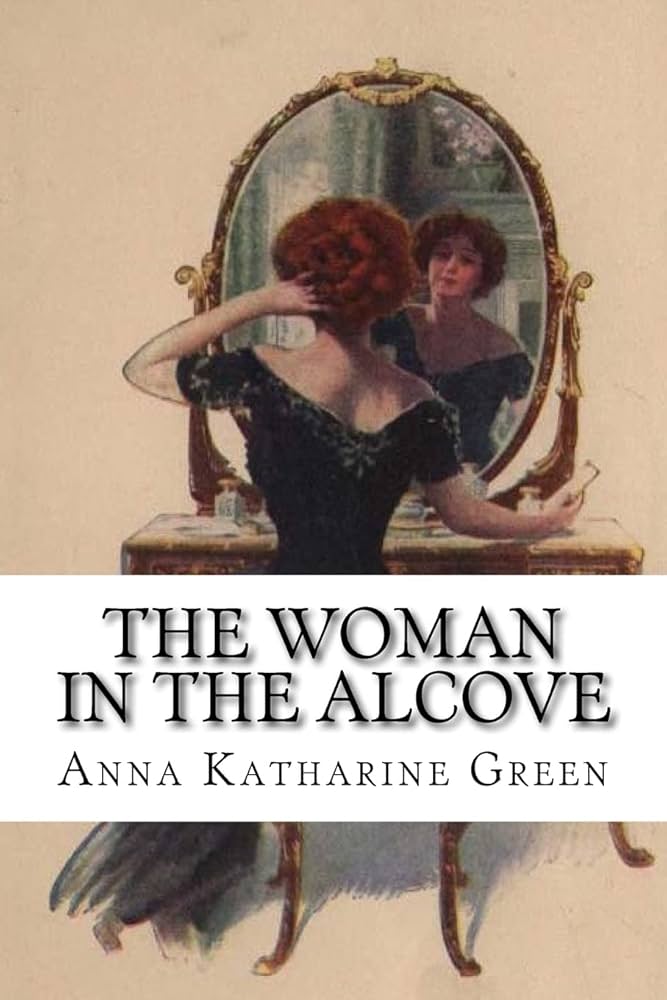Chapter III — The woman in the Alcove
byChapter III – The woman in the Alcove begins in a moment of pure disbelief for the narrator, whose world is upended by a shocking discovery. A priceless diamond—linked to a sensational murder—is found tucked inside gloves lying in her own handbag. Stunned and nearly breathless, she insists she has no idea how the jewel ended up there. The inspector’s demeanor is calm yet serious as he questions her. Though he does not voice outright accusation, the implications are clear. Someone placed the gloves there intentionally, and the inspector hints that the act may have been committed by a man. Immediately, the narrator’s heart turns to Anson Durand. She speaks with strong conviction, defending him and believing that if anyone is being misrepresented, it must be him.
Durand’s entrance shortly afterward brings an electric tension into the room. The air grows thick with unspoken thoughts as all eyes fix on him. He doesn’t hesitate long before admitting his part. Yes, he placed the gloves in the narrator’s bag, but not with any criminal intent. His reason, though misguided, was meant to protect her. He feared that her presence near the scene of the crime might invite suspicion. By placing the gloves in her bag and saying nothing, he believed he was shielding her from a deeper entanglement. His explanation, however, only deepens the mystery. Why didn’t he come forward earlier? Why such a dramatic attempt to cover what now appears to be innocent?
His confession adds more fuel to the flames of uncertainty. The narrator, though grateful that he meant to keep her safe, feels a shift within herself. She now wonders what else he might be hiding—not because she doubts his nature, but because even noble acts can be rooted in flawed judgment. This realization creates a subtle but powerful conflict within her: the balance between emotional loyalty and the need for truth. The gloves are no longer just evidence—they are a symbol of Durand’s desperation, the weight of his choices, and a door that opens into further questions.
A memory emerges, sharp and almost unreal. During the night of the ball, the narrator recalls glimpsing a reflection—a shadowy figure with a look of dread. This reflection, seen from the ballroom through a series of angled mirrors and glass panes, had puzzled her at the time. Now, it may be a crucial piece of evidence. She tells the inspector about this moment. His interest sharpens. Together, they revisit the supper-room to reconstruct the event. Light angles and sightlines are carefully measured. To their astonishment, the reflection could indeed have been projected from a concealed corridor. This new discovery changes the game. It proves that someone else could have been present, watching in fear—possibly the true perpetrator.
With this revelation comes another pressing detail. Earlier that evening, she had noticed Durand adjusting his cravat, seemingly trying to conceal something. The inspector asks him now to remove it. In a quiet act of resignation, Durand does so. The collar of his shirt bears a faint red stain—one that could be dismissed as accidental, or seen as damning. The room grows still. The inspector makes no immediate accusations, but the implication hovers heavily in the air.
Despite this, the narrator remains unshaken in her defense. She knows Durand to be thoughtful and complex, not cold-blooded. Could he really have committed such a calculated act? Every sign of guilt is circumstantial, and she clings to the idea that someone else manipulated the situation to cast suspicion on him. Her instincts tell her that the diamond’s presence in her bag, the terrified reflection in the mirror, and Durand’s strange behavior are all connected. Not by malice on his part, but by something deeper—something tied to secrets, deception, and perhaps a rivalry over the gem.
This chapter captures the emotional turmoil of trying to find clarity in chaos. It shows how easily public perception can shift based on fragments of evidence and how personal loyalty becomes both a compass and a burden. The narrator’s role has shifted from passive witness to active defender, but now she must navigate a case where every discovery reveals another layer of ambiguity. She understands that truth in matters of the heart and law is not always obvious. Her path forward is uncertain, yet she is resolute. Even if the world accuses him, she will keep searching until every thread of evidence is unraveled and every shadow faced.


